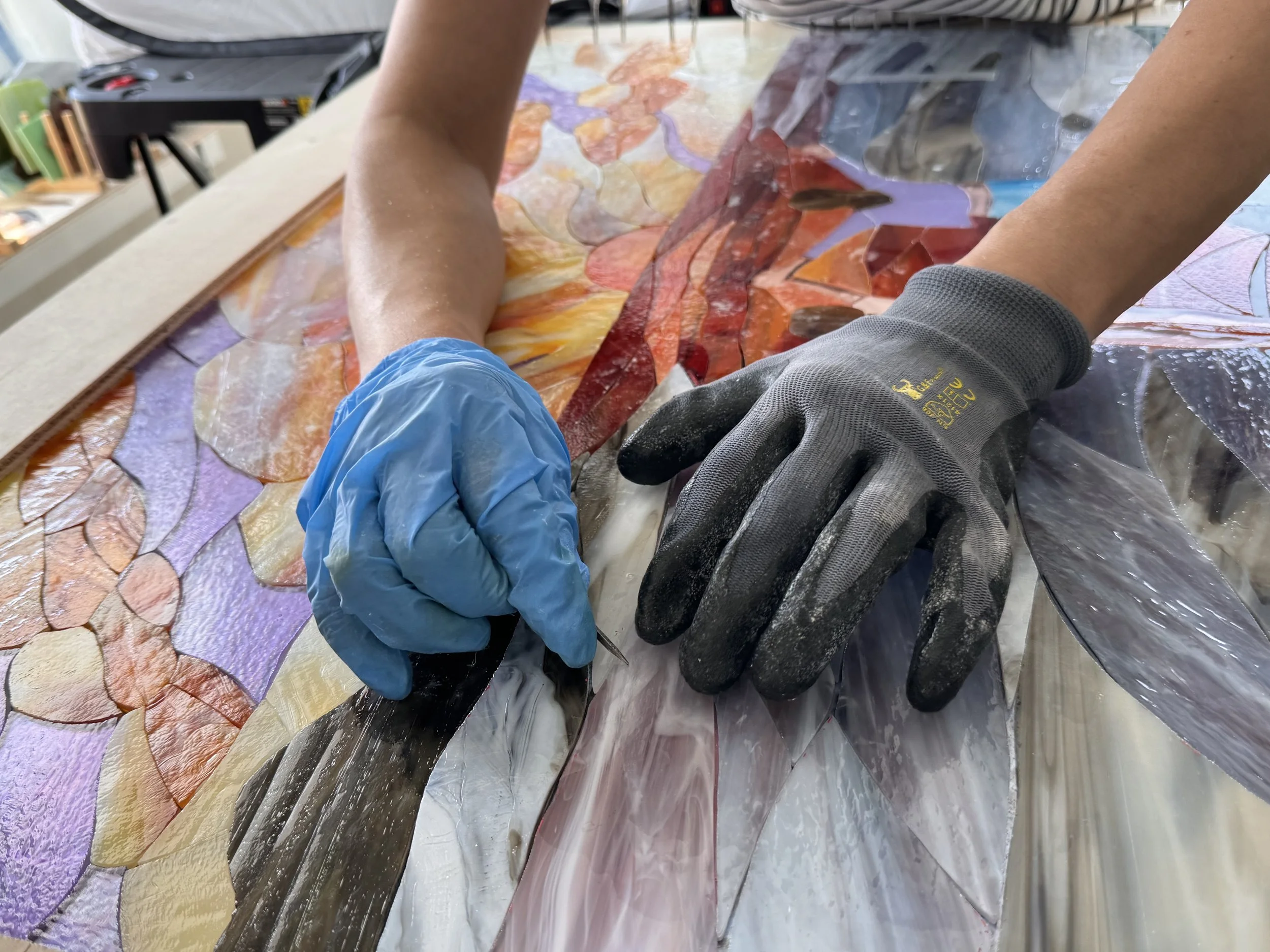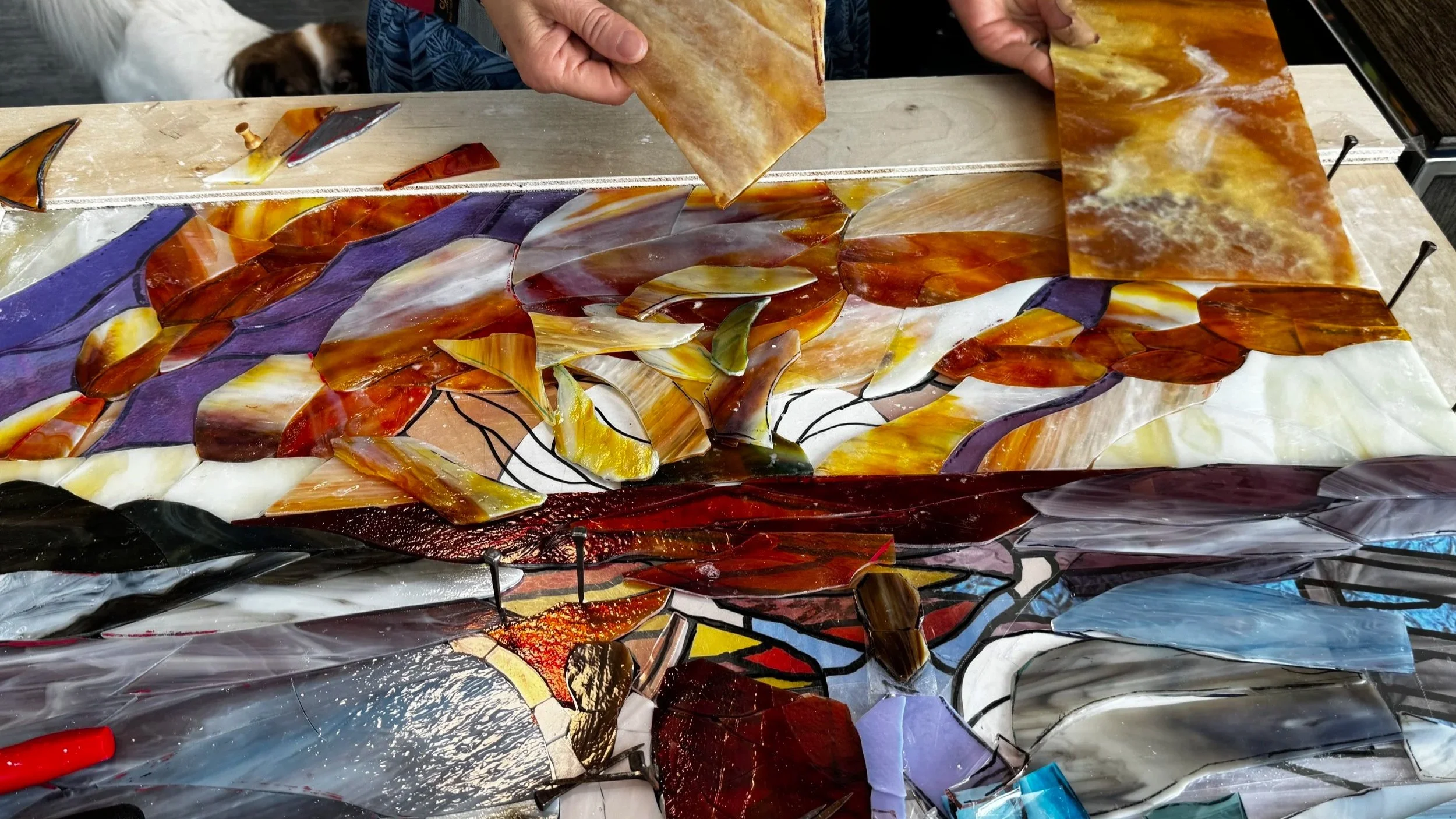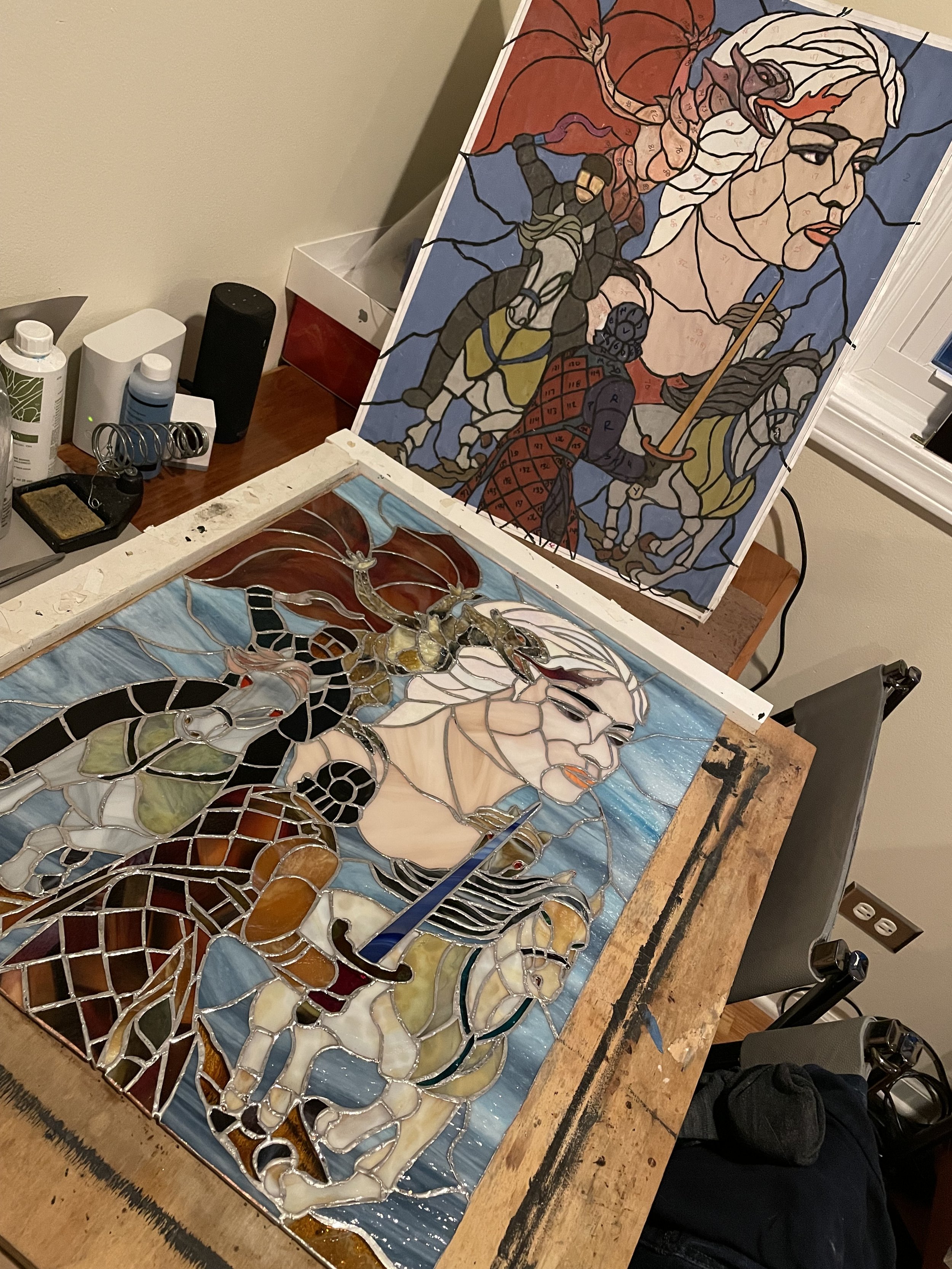Process
The process begins with a cartoon, a full size drawing of each section of the window. Usually the background is drawn first so there is a sense of the break lines. The initial cartoon is hand drawn roughly in free form as in Crucible. It will eventually be transformed into a printable file.
A 20” x 24” window can easily have well over 350 pieces of glass. Note the complexity of Survival where Jim has begun to set out the color palette in pencil. In Dragon Queen, the cut glass differs markedly from the cartoon.
The cartoon’s break lines for a window this size may take days to execute. Shaping Jim’s narrative from shards of glass, Xiumei often redraws, by hand, each section of a cartoon to enhance movement and perspective. In Razor’s Edge, Xiumei redrew the head of the central character and overlayed the initial sketch. Later Xiumei and Jim added the break lines symbolizing a net of fortune, tossed like dice or dust. Next Jim and Xiumei reversed the images.
Starting with the cartoon
Crucible
Survival
Dragon Queen
Razor’s Edge
Choosing the right glass
Xiumei and Jim’s choice of glass is critical to the myth that they are fashioning. Cartoon in hand, they venture out in search of glass that will pay homage to Jim’s storytelling. It is narrative unlike anything else. The process of glass selection usually takes a few days and hundreds of miles of driving.
Stained-glass is classified by light transmission: Cathedral glass or church glass is transparent, allowing light to pass through. Namaste3 is an excellent example. Its pale pink rolled background allows light to fully pass through. Whereas opalescent glass is translucent/semi-transparent or opaque. Crucible has a translucent background. By comparison, Dragon Queen and Namast3, although significantly differing, have stippled backgrounds of fine tiny bubbles. While Mornin’ incorporates a wide variety of mottled or “streaky” shards.
Xiumei and Jim design each section with an aesthetic mix of ribbed, corded, rolled, baroque, mirrored, glue chipped, seedy, stippled, crinkled, sparkled, antique, and hammered shards.
For the narrative, Xiumei and Jim go the extra mile … driving hundreds of miles throughout the Midwest.
Each piece of curated glass intensifies their shared vision. To glimpse the brilliance of their glass choice, focus on the textures of the dragon in Dragon Queen: scarlet or burnt orange wings depending on light and a ribbed body with a decidedly uneven, opaque patchwork of cocoa and golden yellow. In that same work consider how the iridescent glass of the dragon queen’s hair befits her commanding presence.
Xiumei and Jim cut, chip and refine by grinding. Xiumei’s painstaking technique to refine one piece may take a few minutes or hours.
The process of cartooning, cutting, grinding, adjusting and framing for the window itself … well that takes between three to four months.

a creative marathon
Stained glass as art has endured for millennia. It is a vibrant form, dependent on light. Great stained glass is not mass produced. Sometimes at BGL, Jim adds a tad of wit, irony or drama through the hand-crafted glass selection itself.
BGL’s imagery pops with instant recognition.
To obtain the overall impression, they source, cut, grind, fit and grind again until each piece of glass complements the story. They then decide what the next piece will be and whether even the sketch itself should be altered. They know the glass looks a certain way when the light comes from the front. What they don’t know with certitude is what sun light or artificial light will do to the narrative as a whole when the light comes from the back and the sides.
The video clips below illustrate Xiumei and Jim breaking, grinding, foiling, positioning, adjusting, soldering and framing.
Xiumei and Jim take warranted pride in their collaborative endeavor … their creative marathon.
Dragon Queen break lines are drawn on the glass here with a white paint pen so Jim can more easily break each background piece exactly.
Xiumei grinds one tiny piece of 60 focal point pieces. When finished, these glass pieces will become central to Dragon Queen.
Xiumei hammers horseshoe nails to keep all Dragon Queen'‘s glass pieces in place on the wooden board.
Xiumei embeds a part of the dragon’s copper-foiled glass arm.
Nature and art abhor a vacuum. Here Xiumei fills a space in Dragon Queen.
Dragon Queen as Xiumei and Jim near the finish line.
After framing the window in zinc, Jim cuts oak and then will stain the routed oak with minwax to complete the framing.
Xiumei tack-solders the back of Dragon Queen.
Framed in zinc and routed oak












